Brazil and Australia battled it out in an important clash in group C, where Marta returned for Brazil and looked to put her own touch on Brazil’s excellent start to the FIFA Women’s World Cup so far. Australia needed a win to put their bad start against Italy behind them, and that’s exactly what they got in Montpellier.
Brazil’s game plan was seemingly hindered by their own technical abilities and mistakes, and Australia’s dominance in possession was rewarded with all three points. In this tactical analysis, I’ll look at both sides offensive shapes and how Brazil managed to lose control of the game and left themselves unable to take it back.
Lineups
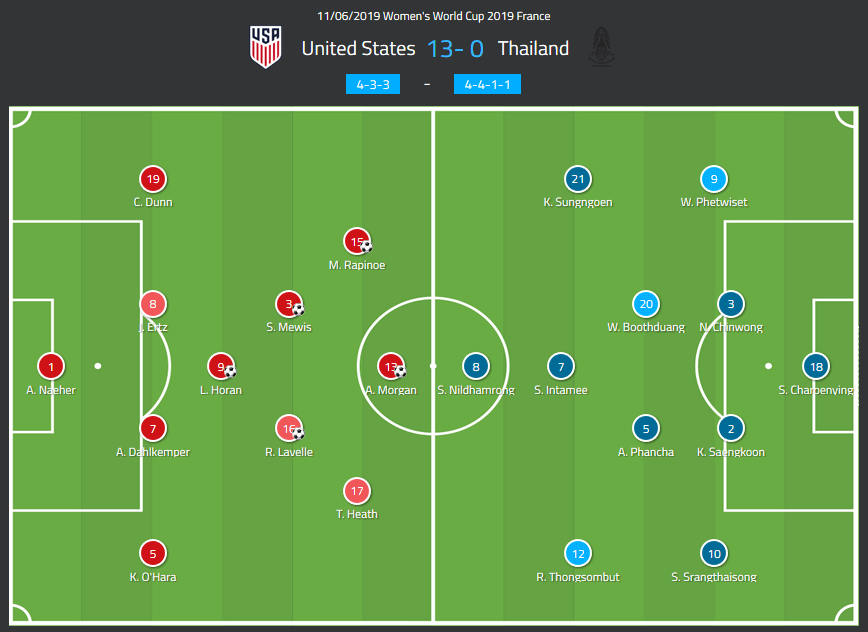
This meant that Australia were lined up in a 4-3-3, while Brazil opted for a 4-5-1. Brazil were stuck in this 4-5-1 for the vast majority of the game, while Australia’s full-backs moved high and wide, occupying the wingers of Brazil and penning them in.
Both sides attack the wings
Brazil conceded three goals in the game due to their inability to defend crosses, which in hindsight wasn’t helped by their shape. The situation below highlights how narrow Brazil were, which forced Australia to go wide in order to build attacks, with their full-backs pushing forward as highlighted with the vast space below. This shape therefore in many ways encourages the opposition to go wider, suggesting Brazil were comfortable with their ability to deal with crosses. The current shape they are in below is a perfectly good one, as there is no real penetrative threat and the opposition are made to play to the wing, a position which is further away from the net.
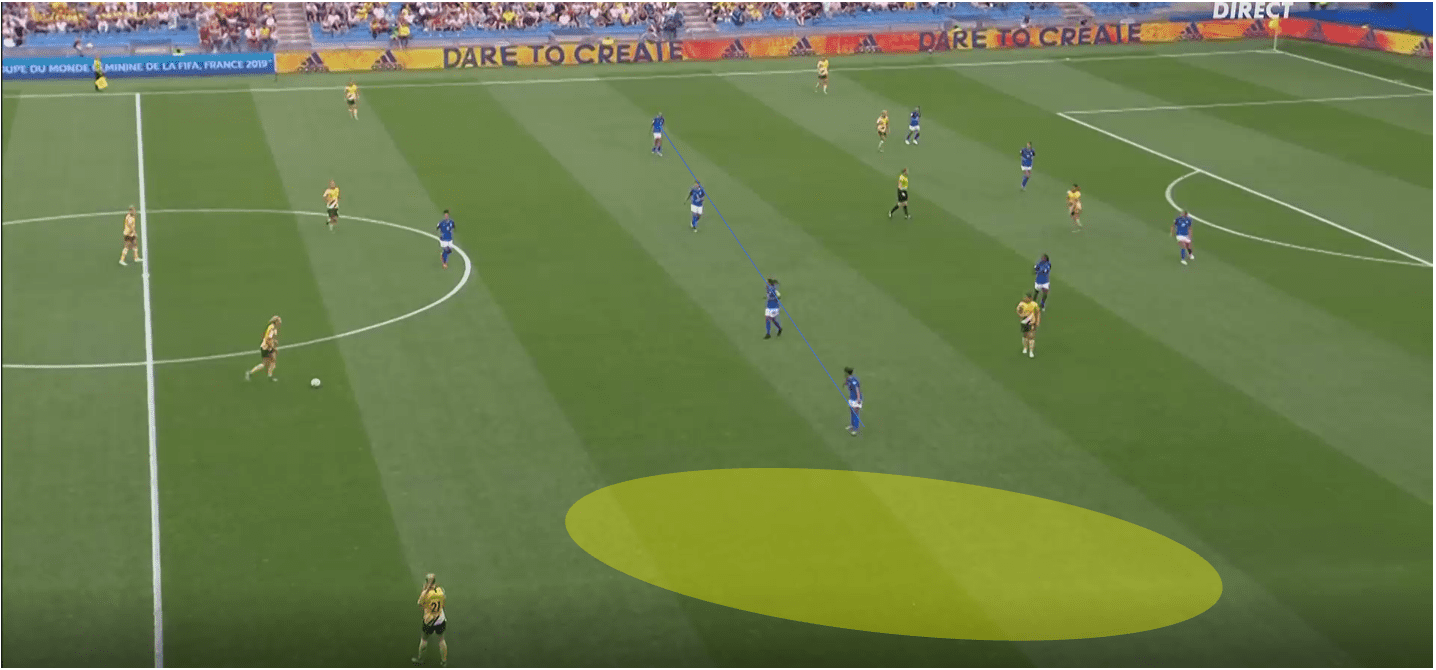
In situations which involved any defensive transition, Brazil were slow and looked confused as to how to solve any disruptions in their structure. This was highlighted most often by Marta’s slow tracking back with the full-back, as she often just didn’t track back at all. This left Brazil in a 4-1-3-2 shape, with Formiga playing in a holding midfield position.
With Marta out of the defensive structure though, Australia’s full-back Ellie Carpenter is free to make a run down the line unopposed. In this situation, Formiga needs to recognise the danger and drop back to form a 4-4-2, becoming a flat central midfield player. Her fellow central midfield player acting as a winger for the time being, or potentially the opposite way around.
In reality, Formiga stayed in her holding role while the other central midfield player slowly moved back, by which time Carpenter had delivered a dangerous cross into the box.
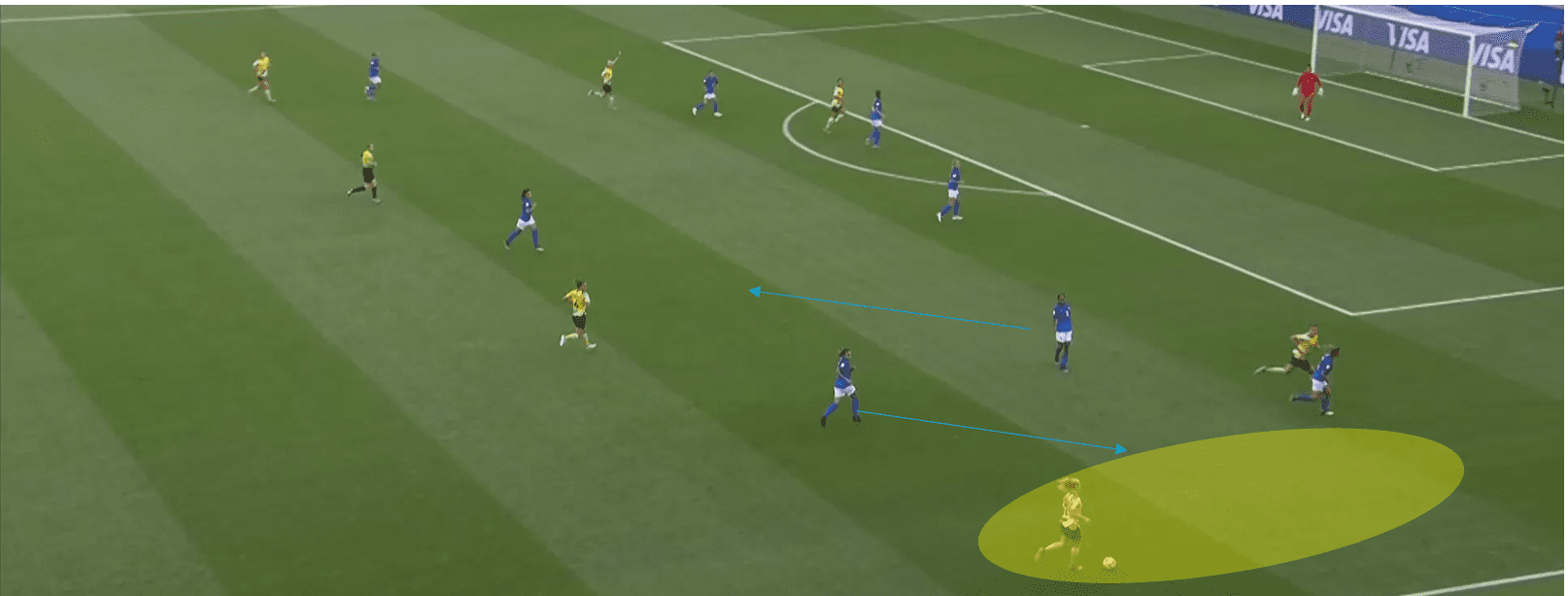
As time went on, the more Australia probed the wings and started committing more players onto the wings in order to create overloads. This led to Brazil becoming slightly less compact, and Australia started to combine and use these spaces effectively. We can see an example of an excellent penetrative pass below, which allows Australia to overload Brazil’s full-back and deliver a cross in.
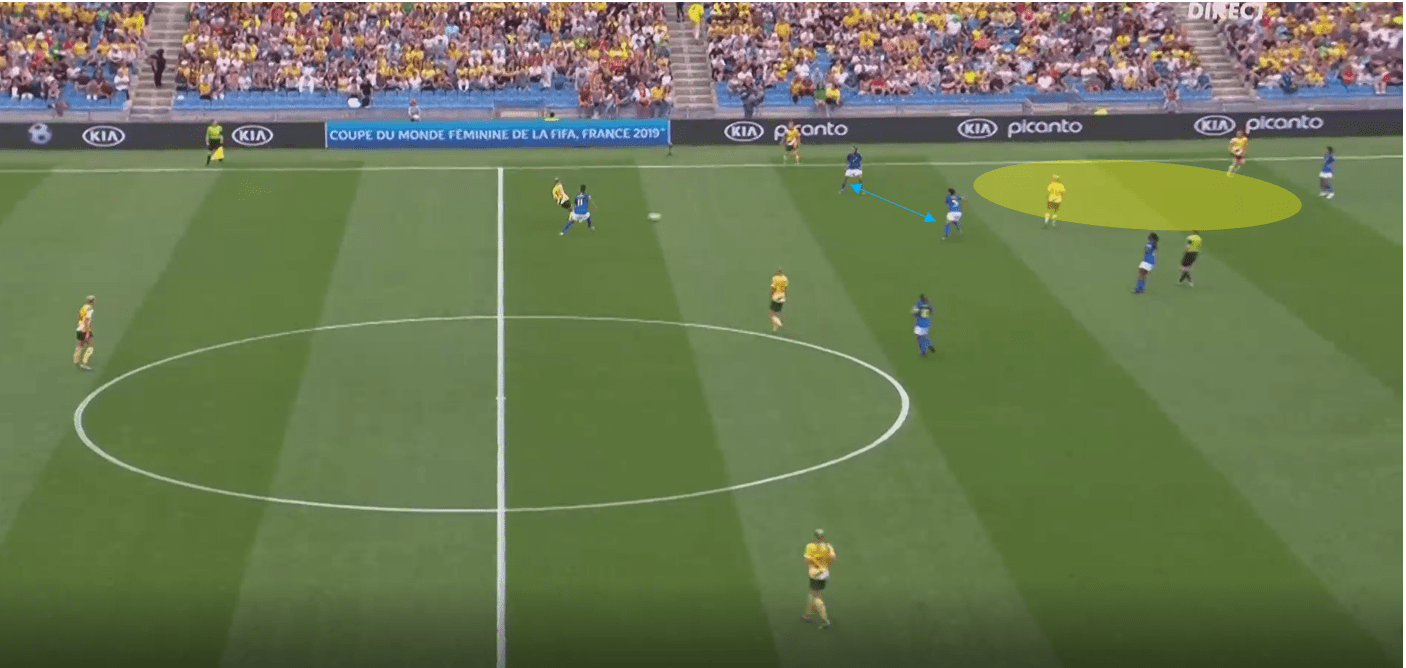
Brazil’s offensive patterns
Much of Brazil’s offence came around Carpenter, with her positioning exposed many times by the Brazilians. We can see below, Carpenter’s positioning is very high, and has been forced to push out to deal with the nearest winger. Her own winger is seemingly missing from her position. Brazil’s striker on this side would then make a run into this space and look to deliver a cross, usually to Cristiane, who is excellent in the air.
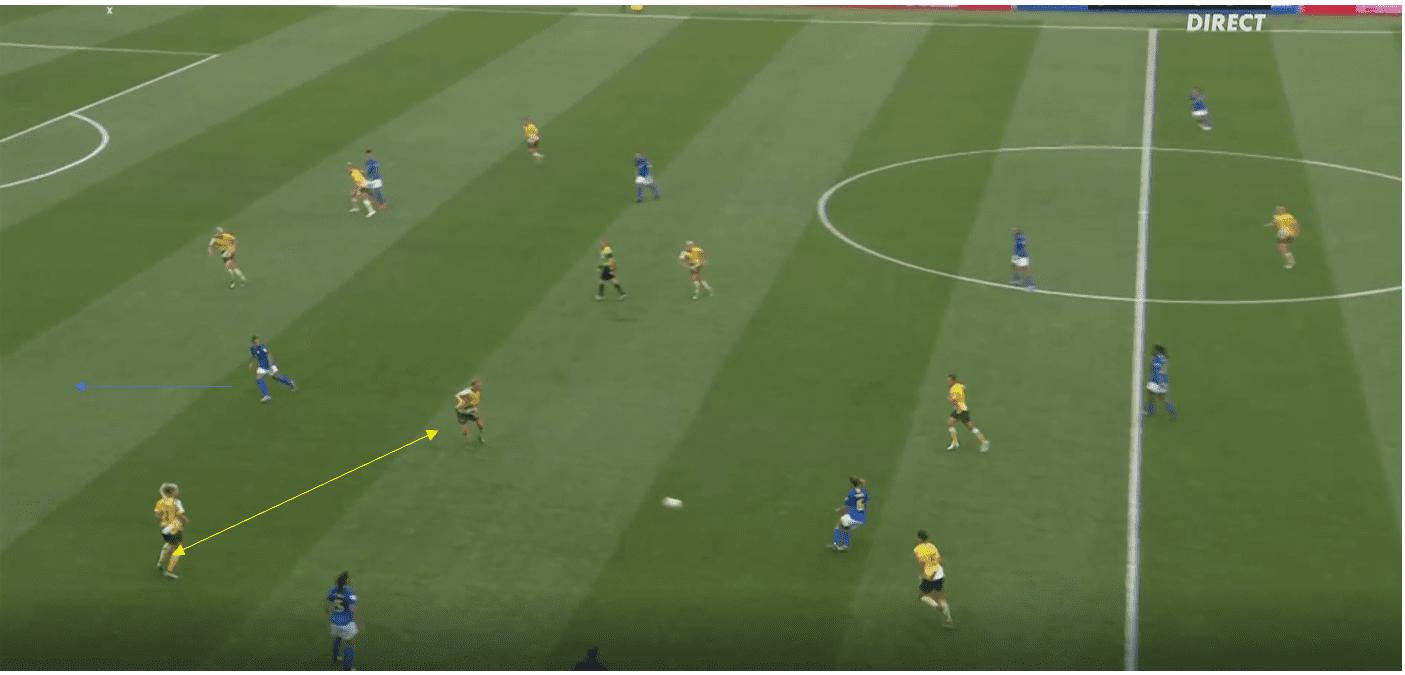
We can see again below, the Brazil winger lures Carpenter higher up the pitch and then spins into space where Carpenter should be if again, her winger is in the correct position and isn’t lured to press. The holding midfielder should also recognise this space let by Carpenter and cover it.
The Australian full-back made up for some of her positioning errors with some excellent offensive work, and also made some excellent recoveries, but I fear more teams will try to penetrate Australia’s defence through the kind of gaps seen below, and so Carpenter will have to learn from this.
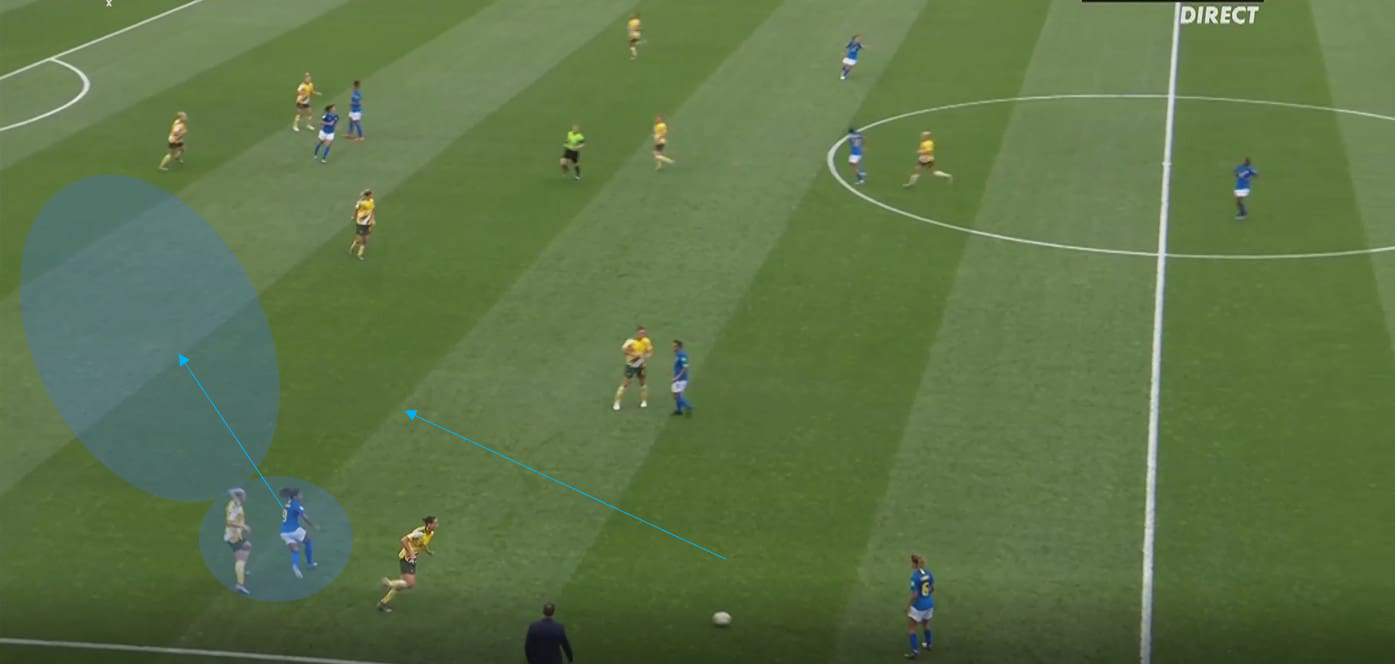
Brazil lose control of the game
Brazil found the game all tied up and began to completely lose control of the game, with Australia sustaining attacks and Brazil struggling to muster up any form of counter-attack. So why did they lose control?
It was due to their inability to make any in-game adjustments. At 2-2 and then 3-2, Brazil needed to offer some reply or resistance to Australia but instead played the same way they had all game, sitting deep and looking to counter. We can see below, Brazil maintain their shape, and are sat very deep inside their own half. There was no attempt at a high press in order to gain some possession of the ball.
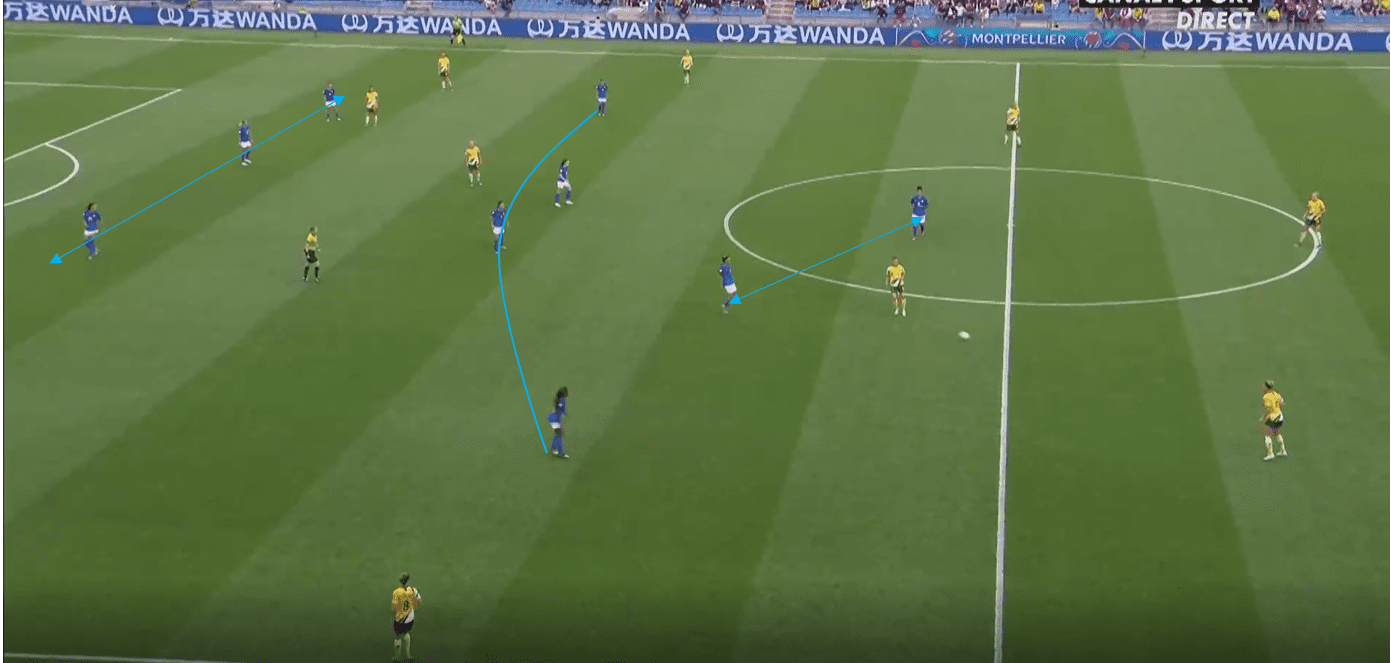
When Brazil did attempt to press with their now front two, they were not vertically compact enough to press effectively, in that the distance between their most and least far forward players was large. Furthermore, if they were to win the ball back in a midfield area, the distance between each unit of the side is too far large to build up effectively, so it was often unsuccessful. Brazil’s backline didn’t seem to want push higher, perhaps fearing a long ball over the top, but if you can press effectively enough, the opposition shouldn’t get an opportunity to play such a pass.
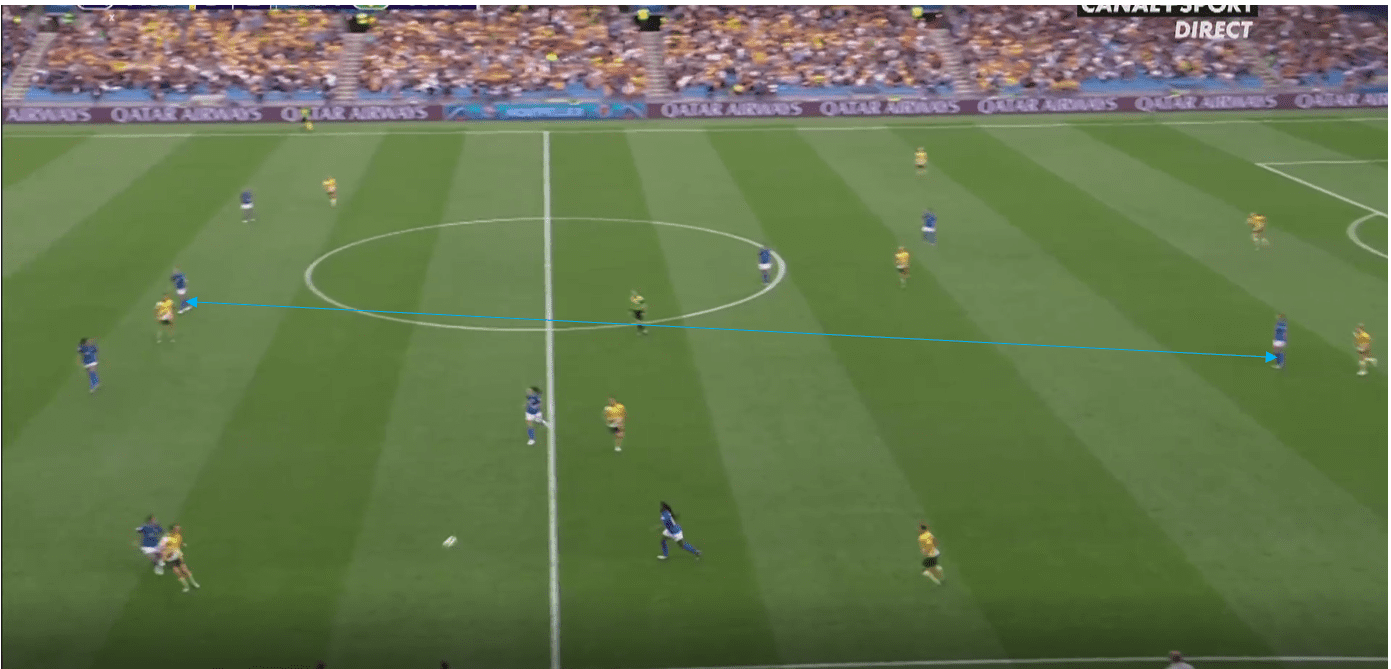
Below is an example of a problem Brazil ran into later in the game when trying to press. Here Brazil cover three Australia players, but the wider centre-back is left free. Usually, what we would see now is the winger go to press this centre-back, while trying to prevent a pass to the full-back. However, with no additional support, the winger cannot go to press as she has a player right next to her. If Brazil’s defence was higher up the pitch, the full-back could deal with Australia’s full-back, while the winger would then be free to press the wide centre-back.
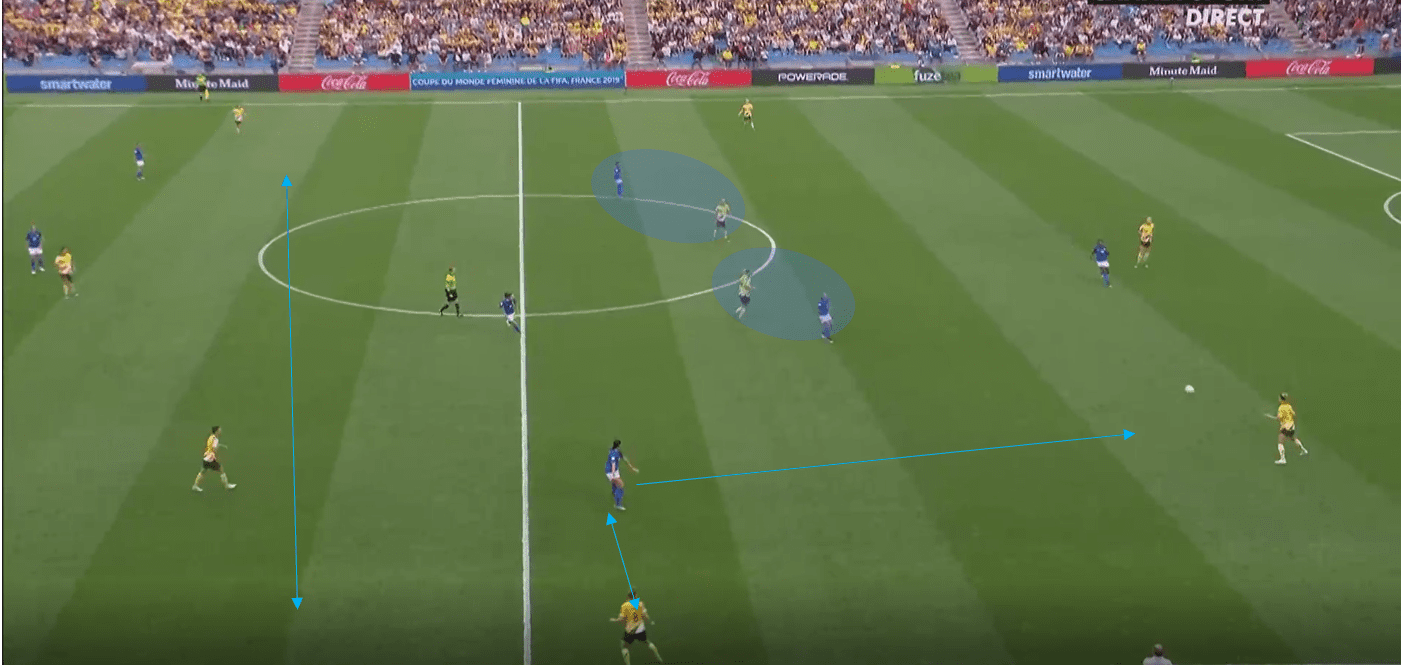
Conclusion
Overall, using tactical analysis, we’ve seen Brazil have only themselves to blame with a string of silly mistakes leading to avoidable goals being conceded. Brazil’s lack of in-game adjustments, where the blame lies both on and off the pitch, is a worrying sight for the side, and should this not be fixed I would fear the worst for them should they get to the latter rounds.
Australia dominated the game, bur Brazil let them. If Brazil’s confidence in defending crosses been justified, they would likely have six points from six in the group stages of the FIFA Women’s World Cup.
If you are following the FIFA Women’s World Cup 2019 then you will find our FREE tactical preview magazine the perfect compliment to the tournament. You can download it HERE – each nation is previewed and we also profile their key player and young player to watch. Enjoy!

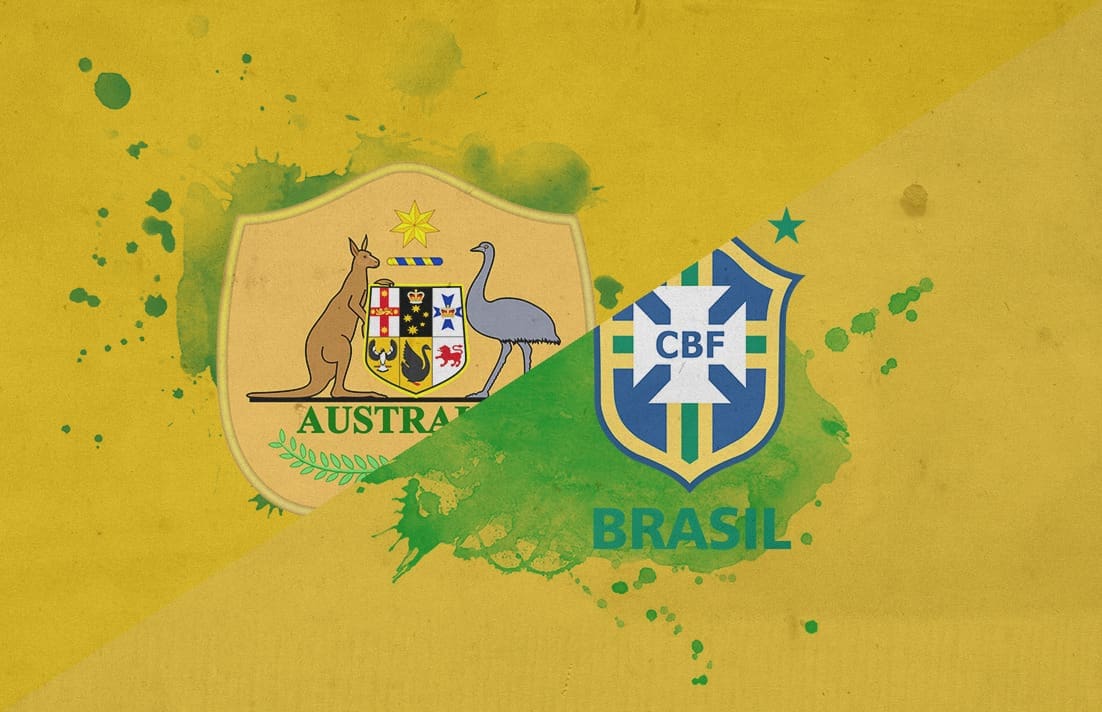



Comments